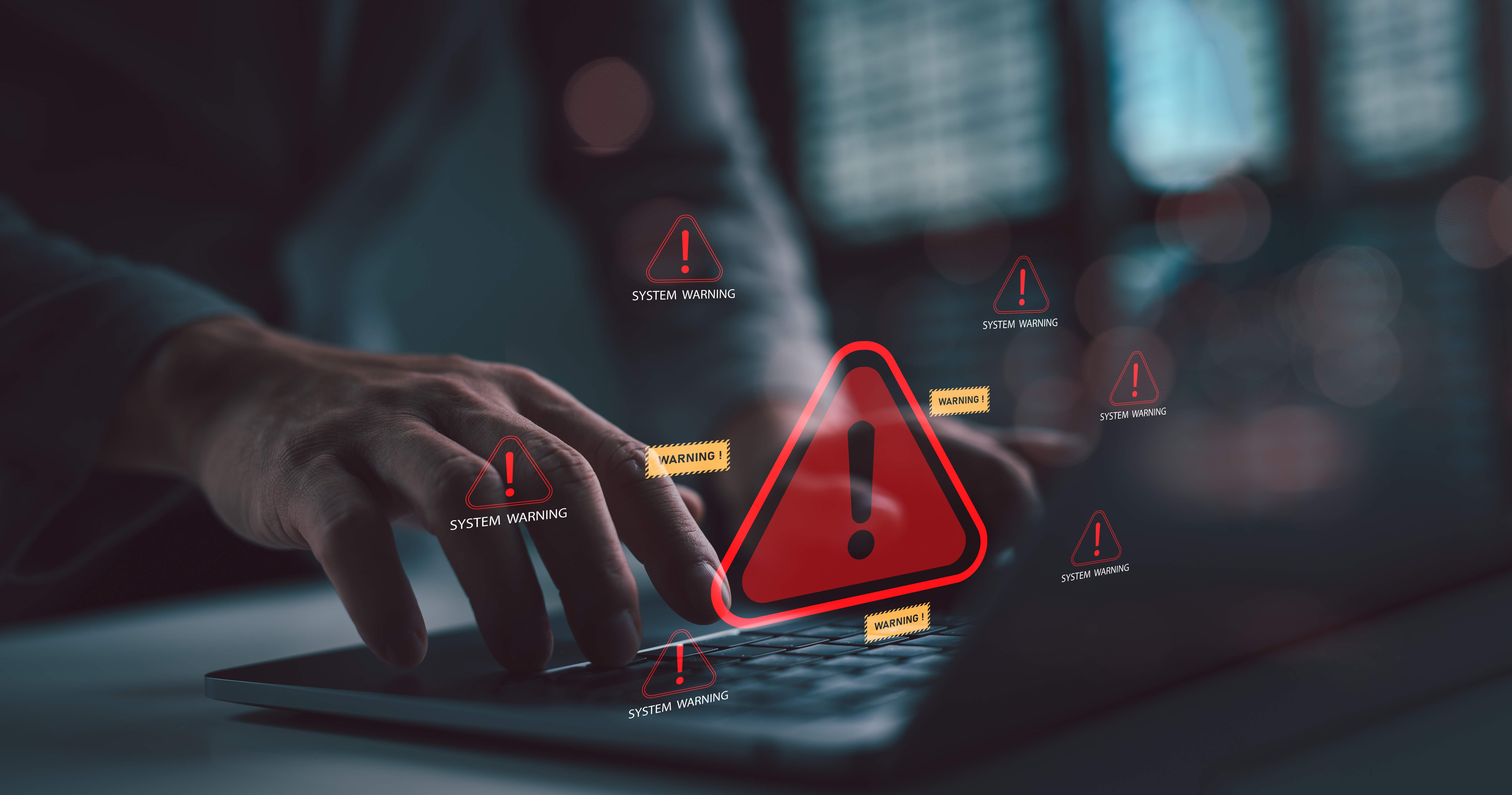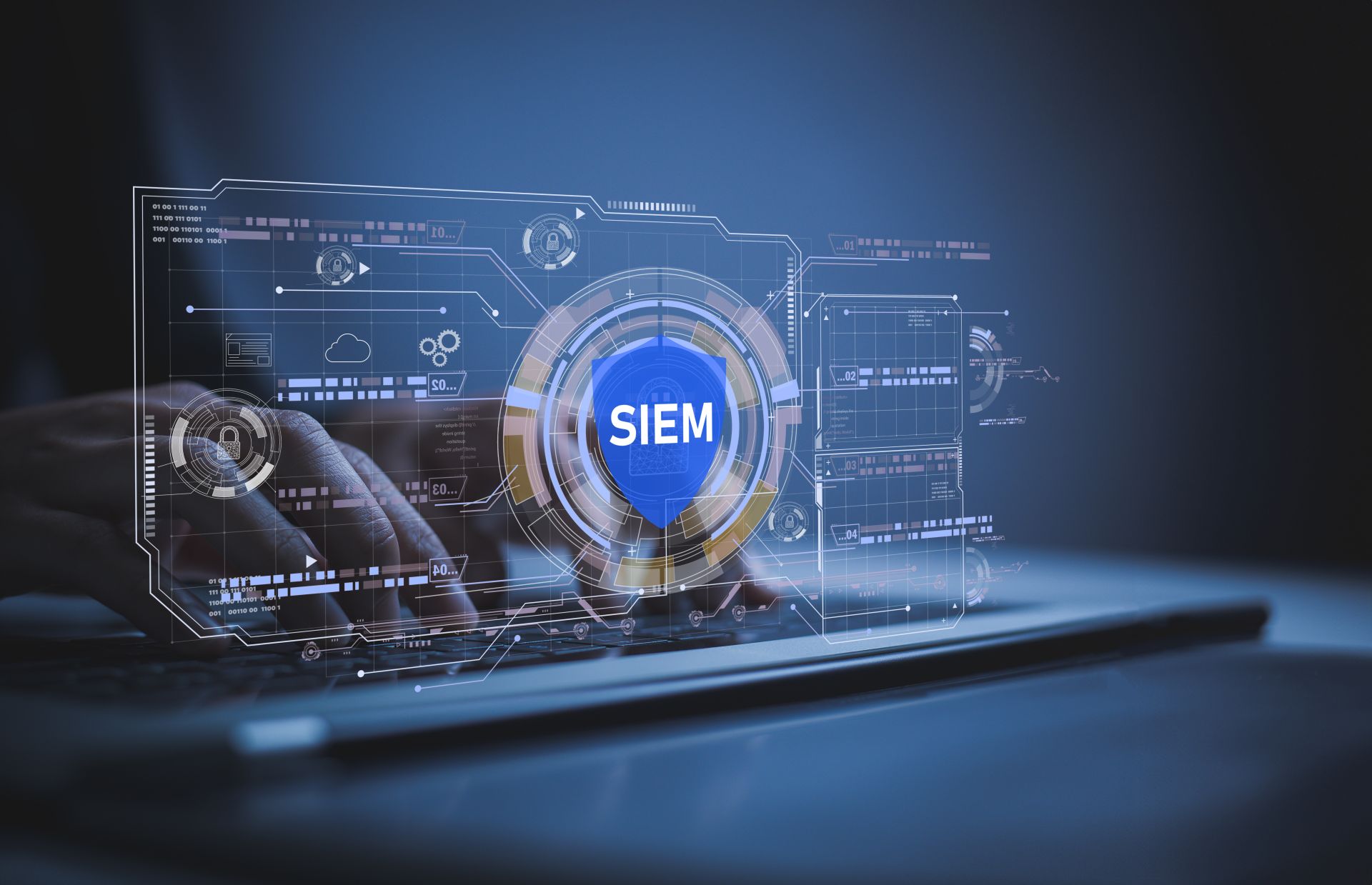Highlights
Cybercriminals never sleep – literally. Every day, new phishing campaigns emerge, the number of ransomware attacks increases, and overloaded servers fall victim to increasingly sophisticated DDoS attacks. In this digital chaos, the SOC (Security Operations Center) acts as a guardian – the command center of IT security within an organization.
According to IBM’s Cost of a Data Breach 2023 report, the average global cost of a data breach reached a record-breaking USD 4.45 million*, and the number of incidents continues to rise. Sounds serious? Because it is. So, what threats does the SOC detect most frequently? Below, we present five of the most common attack scenarios that appear daily on the radar of security analysts.
5 cyber threats most commonly detected by SOC
The SOC serves as an analysis and rapid-response hub – a digital seismograph for IT incidents. Among the most frequently identified incidents are:
- phishing – attempts to steal data and credentials,
- ransomware – malicious software that encrypts data and demands a ransom,
- DDoS – attacks that overwhelm servers and applications,
- malware – various types of malicious software,
- insider threats – deliberate or inadvertent actions by employees.
Phishing accounts for over 36% of all security breaches*. It is therefore no surprise that this type of attack is what the SOC must detect first and foremost.
Phishing and Ransomware – how SOC detects these threats?
Phishing – including its more advanced forms, such as spear phishing, smishing, and vishing – is often the first step toward a more serious incident. Just one click on a crafted link is enough for a cybercriminal to gain access to login credentials and open the door to further actions.
Ransomware, on the other hand, is a threat with tangible costs—according to IBM, in 2023 the average cost of a ransomware incident reached USD 5.13 million*.
The SOC detects phishing campaigns through methods such as:
- Email analysis using sandboxes, DMARC/SPF/DKIM rules, and anti-spam filters
- Log correlation from various sources (mail servers, endpoints, proxies)
- User behavior anomaly detection (e.g., unusual logins from new locations)
In the case of ransomware, the following approaches are employed:
- detection of unusual file encryption patterns and a high volume of changes within a short period,
- network traffic monitoring for signs of lateral movement,
- backup anomaly detection, identifying sudden attempts to encrypt or delete backup copies.
A SOC is not limited to mere monitoring – it can automatically isolate infected endpoints and immediately notify IR teams.
“The SOC is not just a monitoring center, but an analytical hub – it is crucial that the team can connect individual alerts into a coherent incident story. For example, isolated warnings about suspicious logins or unusual network activity may seem harmless on their own, but when combined, they reveal the pattern of a ransomware attack or lateral movement within the infrastructure. This is exactly what we do at Euvic – our specialists identify the problem, analyze its source, and respond effectively”.
DDoS attacks and network infrastructure abuse
DDoS (Distributed Denial of Service) attacks remain among the most disruptive – increasingly in the form of RDoS (Ransom DDoS), where cybercriminals combine infrastructure overload with ransom demands. They can paralyze online services, prevent customers from accessing resources, and cause significant reputational damage. Imagine a massive traffic jam on a digital highway – that is exactly what infrastructure looks like during a DDoS attack.
Cloudflare reports that in 2023, the number of large-scale DDoS attacks increased by over 110%* year over year, with short but intense attacks becoming increasingly common. This makes rapid SOC response absolutely critical.
The SOC analyzes traffic in real time using IDS/IPS systems, NetFlow probes, and network behavior analysis solutions. This enables:
- identification of different types of DDoS attacks – volumetric (e.g., UDP floods), protocol-based (SYN floods), and application-layer (HTTP floods),
- detection of sudden overloads or unusual traffic patterns at times when activity is not expected,
- automatic blocking of malicious traffic through integration with firewalls and WAF systems.
The SOC can also leverage Threat Intelligence to more quickly recognize botnets and known IP addresses used in attacks.
Insider threats and unauthorized activities
Not all incidents originate from external attacks. Sometimes the source of trouble is sitting at the desk next to you. It is employees – whether acting intentionally or unintentionally (e.g., through using shadow IT or personal clouds) – who can copy data, abuse privileges, or install unauthorized applications.
The SOC employs tools such as UEBA (User and Entity Behavior Analytics), which analyze typical user behavior patterns and detect anomalies – e.g., logins at unusual hours or sudden transfers of large volumes of data.
According to the Ponemon Institute’s Cost of Insider Threats report, the average cost of incidents related to insider threats exceeds USD 15 million* per organization annually. This is one of the highest levels among all types of security breaches, highlighting that risks associated with employees and business partners cannot be ignored.
The SOC monitors the activities of users and administrators to detect:
- privilege escalation attempts,
- unusual operations on large datasets (e.g., mass file copying),
- anomalies in working hours (e.g., night-time logins to critical systems),
- use of UEBA and DLP for behavioral analysis and data leak detection.
The SOC aggregates logs from directory systems (AD/LDAP), business applications, and endpoints, and then correlates them in a SIEM to identify abuses. SOAR playbooks enable automatic account blocking or escalation of the incident to an L2/L3 analyst.
Why modern Microsoft solutions enhance SOC effectiveness in threat detection
In the face of threats such as phishing, ransomware, or DDoS attacks, the effectiveness of a SOC largely depends on the quality of the tools that analyze and correlate data from various sources – endpoints, cloud, network, and user identities. Microsoft solutions – Sentinel and Defender XDR – provide an integrated platform that combines the capabilities of SIEM, SOAR, XDR, and behavioral analysis in a single interface.
With automation, machine learning, and global threat intelligence, the SOC can identify complex phishing campaigns, unusual login attempts, or suspicious network activity more quickly – and respond immediately by isolating affected endpoints, blocking traffic, or escalating incidents.
Moreover, these technologies enable unified monitoring across the entire organization – for both on-premises and cloud environments – which, in the case of ransomware or DDoS attacks that often spread across multiple resources, provides a more complete picture and more effective defense than traditional, fragmented solutions.
As a result, the SOC is no longer just a set of tools reacting to individual events – it becomes an active, intelligent protective shield capable of detecting, analyzing, and neutralizing threats across multiple layers, significantly enhancing the organization’s overall security.
Summary – 5 most common threats detected by SOC
The SOC is not just a monitoring tool; it is above all a combination of people, processes, and technology working together to ensure that an organization is resilient against the rising wave of cyber threats. Phishing, ransomware, DDoS, and insider threats are just part of the daily work of security analysts.
Incidents are increasing, costs are rising, and often the most valuable asset – company reputation – is at stake. That is why a SOC is no longer a luxury, but a necessity. Want to learn how our SOC solutions can help your organization? Check out our SOC offerings.
_
Bibliography:
- https://polandinsight.com/even-1700-attacks-per-week-here-is-the-ranking-of-main-threats-in-the-polish-network-45658/ [access: 20.11.2025r.]
- https://www.verizon.com/business/resources/reports/2024-dbir-executive-summary.pdf [access: 20.11.2025r.]
- https://h7.cl/1jHaF [access: 20.11.2025r.]
- https://www.dtexsystems.com/blog/2025-cost-insider-risks-takeaways [access: 20.11.2025r.]










